#olmec mythology
Text
What Do You Need To Know About Olmec Maize God?
When it comes to ancient civilizations, the Olmecs are one of the most intriguing. One of the things that makes them so fascinating is their unique pantheon of gods, including the Olmec maize god.
This deity was one of the most important to the Olmec people, as maize was a vital part of their diet and culture. The Olmec maize god was often depicted as a young man, carrying a maize cob in one hand and a Farming tool in the other.
He was also sometimes shown as a creature with a human body and maize head. This was likely meant to represent the corn plant, which was seen as a symbol of life and fertility.
The Olmecs believed that the maize god was responsible for the growth and harvest of the crop. Offerings and sacrifices were often made to him in order to ensure a good harvest.
While we may not know everything about the Olmecs and their gods, the Olmec maize god is definitely one of the most fascinating and intriguing. Visit our website to know more about the maize god of olmec!
2 notes
·
View notes
Text
Exploring Ancient Tribes in Central America: Gods, Myths, and Cultural Heritage
Ancient Tribes in Central America and Their Gods: A Journey Through Mythology and Belief Systems
Central America is known for its rich and diverse cultural heritage, with a history that stretches back thousands of years. The ancient civilizations that thrived in this region left behind a legacy of remarkable architectural wonders, advanced agricultural practices, and intricate belief systems. A…

View On WordPress
#Ancient Civilizations#Aztecs#Central America#Cultural Heritage#gods and goddesses#Maya#mythology#Olmecs#Zapotecs
0 notes
Photo

The Ball Game of Mesoamerica
The sport known simply as the Ball Game was played by all the major Mesoamerican civilizations and the impressive stone courts became a feature of many cities. More than just a game, it could have a religious significance and featured in episodes of mythology. Contests even supplied candidates for human sacrifice and became literally a game of life or death.
Origins
The game was invented sometime in the Preclassical Period (2500-100 BCE), probably by the Olmec, and became a common Mesoamerican-wide feature of the urban landscape by the Classical Period (300-900 CE). Eventually, the game was even exported to other cultures in North America and the Caribbean.
In Mesoamerican mythology the game is an important element in the story of the Maya gods Hun Hunahpú and Vucub Hunahpú. The pair annoyed the gods of the underworld with their noisy playing and the two brothers were tricked into descending into Xibalba (the underworld) where they were challenged to a ball game. Losing the game, Hun Hunahpús had his head cut off; a foretaste of what would become common practice for players unfortunate enough to lose a game.
In another legend, a famous ball game was held at the Aztec capital of Tenochtitlan between the Aztec king Motecuhzoma Xocoyotzin (r. 1502-1520 CE) and the king of Texcoco. The latter had predicted that Motecuhzoma's kingdom would fall and the game was set-up to establish the truth of this bold prediction. Motecuhzoma lost the game and did, of course, lose his kingdom at the hands of the invaders from the Old World. The story also supports the idea that the ball game was sometimes used for the purposes of divination.
Continue reading...
178 notes
·
View notes
Photo
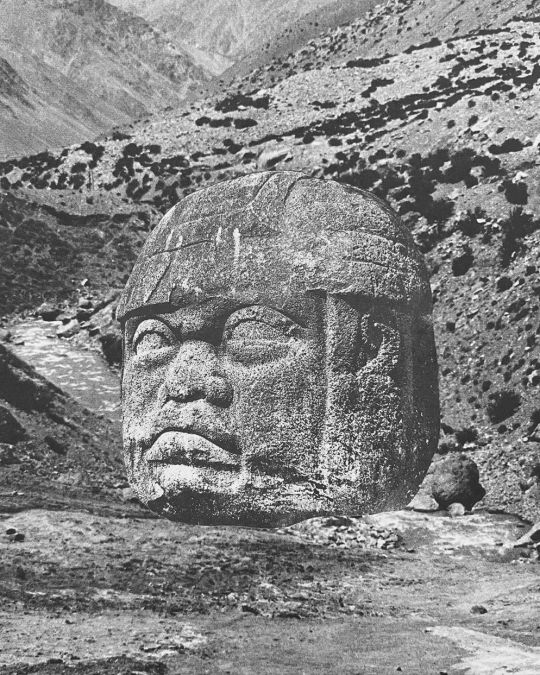
Monumental Olmec basalt head (monolith) without a body, from the settlement of Tres Zapotes in the Mexican state of Veracruz. From "Mythology of the Americas" by Cottie Burland, 1970. https://www.instagram.com/p/CofiKbFN67i/?igshid=NGJjMDIxMWI=
490 notes
·
View notes
Text
The New York Metropolitan Museum of Art is home to thousands of amazing exhibits. One of the most stunning is a jade Olmec face dating back 3000 years.
20 notes
·
View notes
Text

Seated Figure
Olmec
12th–9th century BCE
This pudgy figure is one of the best examples of this class of human figures displaying characteristics of well-fed children, the so-called Olmec “babies.” The body of the baby was careful modeled to indicate realistic folds of skin and subcutaneous fat, evoking themes of abundance and plentiful resources. The face displays non-mortal characteristics, such as the stylized eyes, downturned mouth, and squared ears. The left portion of the figure’s back contains iconographic elements, such as crossed bands and crosshatching, possibly representing tattooing or scarification. This example is distinguished by its elaborate headpiece colored red-pink with powdered cinnabar and red ochre, that was probably used to anoint the tomb in which this figure was placed.
Supernatural infants play a significant role in Olmec art. These could be portraits of elite babies, infantilized portraits of actual individuals, idealized portraits of deities or mythological characters, or some other type of ritual agent. They could be memorials to infants that left this world too early, or representative emblems of whole lineages. The Olmec peoples may have been preoccupied with child-rearing and the mythological connections between the life cycles of infants and agriculture. In some cases, the ceramic effigies may have served as substitutes for actual infants in a sacrificial or dedicatory ritual, as there is compelling evidence of Olmec infant sacrifice or ceremonial burials. Mexican researchers working at the extraordinary waterlogged site of El Manatí (“the manatee”) found dismembered bones of newborns, perhaps neonates, and a primary infant burial in the fetal position. These were associated with miraculously preserved wooden busts, rubber balls, and greenstone ax caches. The faces of the wooden busts are evocative of similar expressions found on the ceramic babies.
source
11 notes
·
View notes
Note
What animal forms would you say sit at the intersection of the King and Magician Jungian Archetypes?
oh wonderful question! the king/ruler is a quintessential archetype: a member of the structural quadrant, the king seeks to enact their vision through asserting power and control in the world around them. they find security in maintaining a sense of control; often these individuals are either strong visionary leaders or corrupted by their authoritarian viewpoints. the magician is somewhat more enigmatic — as an impressionist, they also act as a catalyst for change, but when the magician is dominant and lacking structural influence they predominantly enact this through their intuition, reflection, and understanding. the crossroads of the ruler/magician paints the image of a wise leader, in tune with their own feelings and perspective, willing to seize leadership in order to bring betterment, but perhaps even more drawn into the trap of only seeing their own perspective.
for animal forms, apex predators are very fitting for the ruler and i think there's a nice selection of ones that evoke intuition, transformation, and polarized opinions as well. i'll touch on three here.

the jaguar
i used the jaguar as an example of a pullman daemon befitting the ruler in my post, but it's the perfect combination of the ruler and the magician. the jaguar is noble, courageous, and spiritual; in much mythology it is a symbol of leadership and wisdom through innovation. the jaguar exemplifies transformative leadership though also the withdrawn, intensely private nature a ruler/magician would possess.
there's boundless stories of the jaguar in mesoamerican cultures. the maya, for example, associated the jaguar with godliness, the underworld, and fertility. the popol vuh, which recounts the creation and history of the k'iche' maya people, features the hero twins: jaguar-spotted xbalanqué and his twin hunahpú. as another common example, the aztec similarly associated the jaguar with godliness (specifically tezcatlipoca, the smoking mirror, the creator god known to be both vengeful and a patron to the esteemed and wealthy) and strength — seen also through the ocēlōtl warriors. jaguars also are heavily associated with nagual: mesoamerican shapeshifters who have connected with power and spiritual insight, enabling them to take the form of their tonal animal. this is also quite smilar to the olmec spiritualism of the werejaguar, whose symbol is debated, but the anthropomorphism of the jaguar's portrayal seems similar to how the jaguar intersects with divinity and power in other mesoamerican cultures.
anyway all of this culminates to make the jaguar the perfect form for someone who resonates strongly with both the ruler and the magician. the jaguar certainly has other motifs as well; the jungle is of course a strong one, as well as mesoamerica, stalking and hunting, and the significance of their black morph (often called the black panther).

the bearded vulture
the bearded vulture is one of my favorite raptors and another beautiful intersection between the magician and the ruler. vultures in general i believe are wonderful candidates for the magician; scavenger animals excel in insight and transformation, often associated with themes of death and rebirth. the bearded vulture is a real striking example of this — its association with sovereignty comes primarily from iranian culture, known vernacularly as homa. homa is a legendary divine bird, believed to fly restlessly and never land, though when it casts a shadow or lands upon a man it is believed to bestow kingship. even the turbans of kings bore feathers from homa's plumage. homa also had connections with rebirth: similarly to a phoenix, it would be consumed in fire every few centuries, and then be reborn new from the ashes.
homa and the bearded vulture have strong positive associations in iranian culture, as it's also considered a bird of luck and lifelong happinness. it also has intensely false negative associations with taking livestock (the bearded vulture is also called the lammergeier, or lamb-taker in german), which unfortunately has contributed to its threatened status. in greece, the bearded vulture (or ossifrage) were one of the types of birds that ornithomancers could use to guide political decisions, again connecting bearded vultures to the spiritual and to kings.
altogether, the bearded vulture is a great option for someone who relates strongly to the transformative and rebirth aspects of the magician, as well as the destined and noble aspects of the ruler. the bearded vulture, in addition to elements mentioned above, also is associated with symbolism of the alps and highlands, death and decay, and sacred divinity. the bearded vulture is also a good option for a ruler/magician who also relates to aspects of the explorer.

the cobra
the quintessential cobra is commonly confused with the king cobra — or maybe just overshadowed as the king cobra is largest and most venomous "cobra" while not being a cobra at all! it is an ophiophagus and not a naja like species such as the indian cobra and the egyptian cobra. cobras in general have complex associations of nobility, divinity, and fear. it's difficult to separate any snake form from its intrinsic negative associations, though the cobra is particularly rooted in most people's consciousness as being part of snake charming acts and notorious for deadly bites. i'm going to go over the cobra in general, though you could absolutely look into specific species that may fit you the best.
the ruler symbolism of the cobra has been seen both in how the cobra associates with the divine and with kings. the uraeus is one of the most striking cobra symbols: an upright or rearing cobra used in ancient egypt to denote kings. the cobra was intended to be a protector of the pharaoh and of tombs; it was also worn as a head ornament, conveying legitimacy of the ruler. this is due to the uraeus being a symbol of wadjet — the protector of lower egypt, depicted as a variant of a snake-woman (most often an egyptian cobra). gods of other cultures were also associated with the cobra. the hindu gods shiva and vishnu are often depicted with cobras, the latter seen resting atop the cobra shesha: a naga demigod and king of the serpents who holds the planets within his hood. despite the cobra's venomous reputation, it also holds an important place in cultural symbolism as the protector of spiritual and sacred spaces.
all in all, the cobra may be an excellent form for a ruler/magician who relates somewhat to elements of the outlaw. the cobra has a multifaceted reputation of both protective and deadly, kingly and feared, and featured in stories of both creation and destruction.
hope this helps in getting form ideas flowing! :)
19 notes
·
View notes
Text
Tezcatlipoca, or "One Leg".
NO. 1
Tezcatlipoca is the god of the night sky, hurricanes, obsidian, conflict, and providence. When depicted, he usually wore a talisman with a disk worn as a chest pectoral. While depicted with black and yellow stripes painted across his face, he is usually shown with his left foot replaced with an obsidian mirror, bone, or snake, as it was lost to the sea monster Cipactli in the mythos. In the Aztec religion, he was the central deity. In Aztec or Mesoamerican folklore, he and other gods could shapeshift, and he was no different as his counterpart was the illusive but powerful jaguar, which is why he is known as the jaguar god.
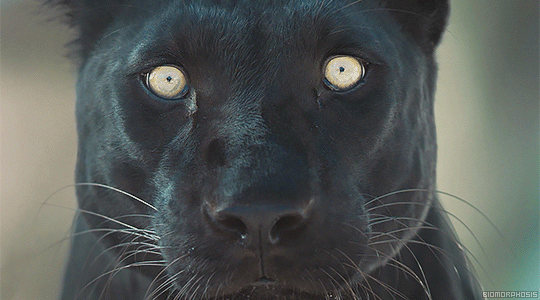
NO. 2
This figure is extremely popular, and worshipped by the Mayan and Olmec communities. His name in the Mesoamerican language means ‘Smoking Mirror.’ This deity has numerous epithets which allude to different characteristics, like Ipalnemoani ("He by Whom We Live"), Necoc Yaotl ("Enemy of Both Sides"), and Tioque Nahuaque (‘Lord of the Near and the Night’), etc. His power to omnipresence was more a connection that extended far beyond obsidian since ritual bloodletting and human sacrifice were conducted with obsidian. Apart from being a creator god, he was also a trickster and ruled over the modern Aztec pantheon.
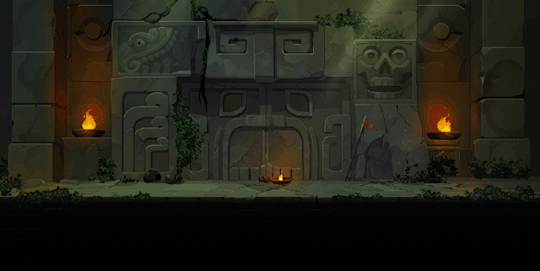
NO. 3
Tezcatlipoca, according to Aztec mythology, was born to the primordial creator deities Ometecuhtli and Omecihuatl, and had four siblings; one of whom, Quetzalcoatl, the god of the wind, patron of priests, and inventor of calendars and books; he was known as the Serpent Feathered god. The brothers feuded as much as they worked together, working towards the same goal but sometimes in opposition towards each other. After being born, this deity spent over 600 years for his youngest brother Huitzilopochtli to grow flesh before Tezcatlipoca and Quetzalcoatl, together, made the world. Before the world was made, the only thing that was technically alive were a few gods, a massive ocean and the sea monster, Cipactli, which Tezcatlipoca successfully lured away and killed by using his foot as bait. Both brothers were able to create the world on the sea monster’s body.
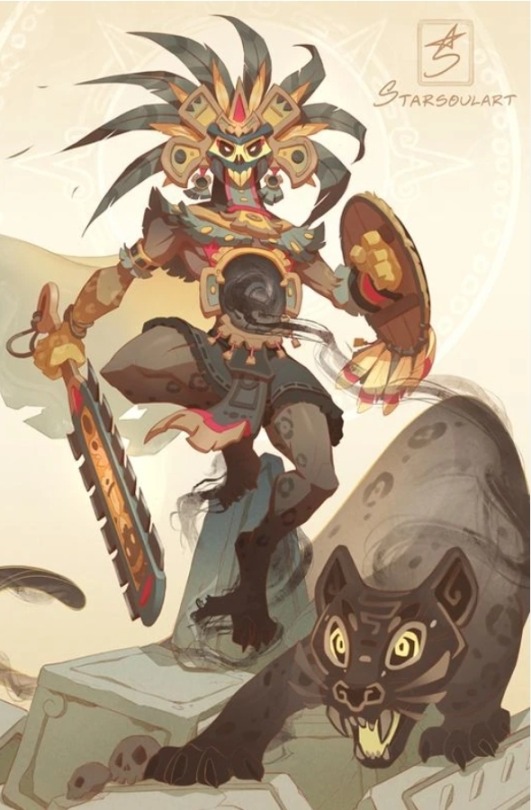
#aztex myths#aztec gods#mythos#mythology#folklore#jaguar gods#animal gods#spirits#symbology#Meso-American#mayan#mayangods#mayanmythology
15 notes
·
View notes
Note
Okay I go to point it out that yes it sad that I have never seen what my direct ancestors look like in ancient and medieval times. And probably never will
But this post I found probably point out a issue I been noticing https://www.tumblr.com/ainomica/686212780028739584
Wait
Are
Late Gen x leftists
And millennials
Using
Pop Culture
As the basic
For
Human warriors
Knowledge?
Oh that explains the black Vikings shit
Yes let say that black peoples were deadass part of some of the most prolific slave traders and rapists in human history? Ooookay!
But let me use my Chimera republic as example of my fantasy au
Though btw the chimera republic is basically fantasy USA strong arming all of the Americas into an empire. Yeah the Americans (or perhaps prime chimerans) are tongue and cheek about but allow the cultures and languages to exist
But let me set up a story-wait best anon
But I think the issues is a lot of people view history from pop culture. No metroplation blacks
Just because pedo land aka Hollywood don’t glorified African warriors at the moment. Doesn’t mean their ( unless they’re pos like the Dahomey) stories shouldn’t be told
Do social media make everyone have the mentality of a bitter 15 year old or something?
>The analogy between Samurai and cops is also appropriate because they used to "break in" new swords by killing peasants who were outside past curfew.

So much samurai stuff is just BS myths, undoubtedly the "insult" thing was abused regularly, I'm not sure how bad the insult needed to be but still.
Class stuff in that post is still pretty much spot on to my knowledge, but a lot of the legends and such are actually myths.
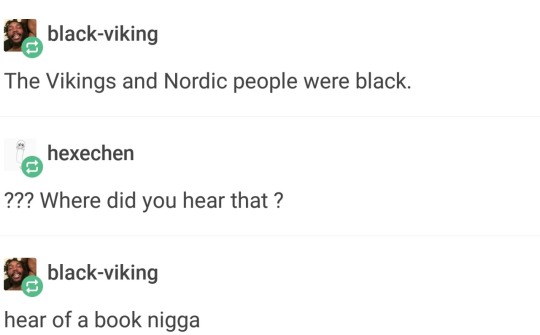
This guy was funny, because he wasn't doing a bit. I think the idea behind the Vikings and Celts came out of the need to cry about dreadlocks belonging to black people and evidence proves those two groups also had a hairstyle like that, so obviously that means they were black somehow.
This is another fun one, USJW is a joke blog
Aztecs and Olmec's are in the mix in this one
Yes let say that black peoples were deadass part of some of the most prolific slave traders and rapists in human history? Ooookay!
Everyone is guilty, sooner we can accept that the sooner we can stop blaming everyone else.
But let me use my Chimera republic as example of my fantasy au
Though btw the chimera republic is basically fantasy USA strong arming all of the Americas into an empire. Yeah the Americans (or perhaps prime chimerans) are tongue and cheek about but allow the cultures and languages to exist
Look up the Ottoman Empire, they were good about that occasionally, at least on paper they were. Achaemenid (Persian) Empire too, long as nobody rebels and everyone pays their taxes you can keep your language, culture, and religion. Again it was like that on paper, reality is it's own thing.
But I think the issues is a lot of people view history from pop culture. No metroplation blacks
probable, of course then people start to emulate them and that's when it gets bad, emulate Uncle Phil instead
Just because pedo land aka Hollywood don’t glorified African warriors at the moment. Doesn’t mean their ( unless they’re pos like the Dahomey) stories shouldn’t be told
Both should be told, truthful dahomey type people stories would be good as well as folks that didn't sell off their fellow Africans to Arabs and Europeans.
Problem is

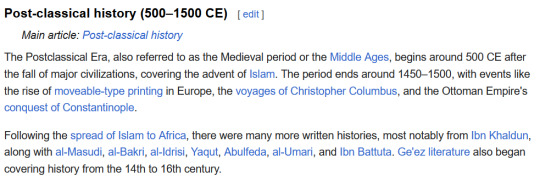
way way back we just don't know, nobody does for sure, and less way back the slave trade kicked into high gear and folks were gettin sold to people in the MENA region.
Might need to just go off of mythology or oral tradition stories, searching for all this stuff gets rough because you look up Africa and you get Egypt and the rest of northern Africa.
Do social media make everyone have the mentality of a bitter 15 year old or something?
Twitter made it so people could only digest information in tiny doses, which meant nuance was lost, which in turn created a lot of ignorance, which human nature when it comes to pride makes admitting ignorance difficult, which made people's ability to actually hold a conversation where differing viewpoints are brought into play vanish.
Same with Facebook except the difference is there's only so much text you can add to a minions meme.
Reddit is good for creating a echo chamber, but at least you can put a lot of text down but living in a echo chamber tends to make one believe that their opinion is the majority one when reality may be totally different.
I do not envy mental health professionals, things are going to get worse as worse for them in the coming years.
5 notes
·
View notes
Text
Fate Grand Order Servant Comparisons
Jaguar Man - The concept of the Jaguar in Mesoamerican and South American mythologies
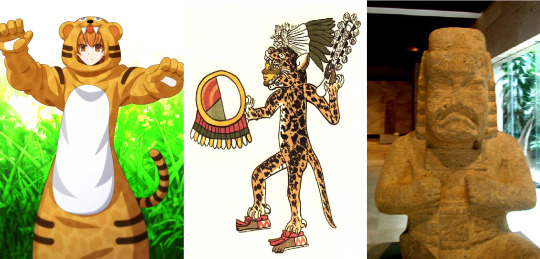
Left - FGO
Right - Left - Aztec Jaguar Warrior , Right - Olmec Werejaguar
#fate grand order#fgo#jaguar man#jaguar man fgo#fgo jaguar man#taiga fujimura#fujimura taiga#jaguar man fate#fate jaguar man
3 notes
·
View notes
Note
Brother DIallo, why black folk want to be Jews so bad? There is a small population of Jews from Africa. Beta Israel. Yet we have "Hebrew Israelites" claiming Black folk are the "true children of Israel" etc. We have Kanye and now Kyrie espousing this nonsense. We have black folk claiming Jew/Semite, Olmec, Native American... anything but African. We even have elements saying we not from Africa and slavery never happened! What is happening here bro?
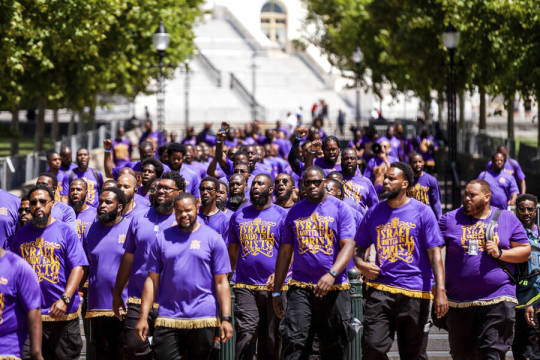
Being a Black Jew is different than being a Black Hebrew Israelite.
Judaism, standard, reform, or orthodox Judaism isn't particular popular. Most Black people who are members of this Religion are born into it; meaning their mother was Jewish, or they convert to Judaism and follow the rituals and commandments of the Torah.
The Black Hebrew Israelite that Kyrie and Kendrick Lamar rock with are a whole different sect, it's a Cult that diverges greatly from Judaism practiced by orthodox, standard, or reform Jews.
These BHI are actually gaining in popularity for a few reasons:
Their Presentation: The BHI have standards for grooming and conduct that is very attractive to people who are ignorant of their core ideology and mission. They present as strong, determined, masculine, chaste, disciplined, Godly "Warriors," are opposed the injustices imposed on Black people of the Americas (or as they call us; The Lost Tribe of Judah).
Their Rhetoric: The BHI aggressively condemn the System and Sin. They call for Men to be Godly and protect Black Women & Children. They predict the downfall of our Oppressors and the full redemption of the Black Family under God's Divine Grace. They also teach that Black people who were subjected to Slavery have a special Covenant with Yahweh; they teach that we are the chosen people.
Their Anti-African Stance: For generations the African Diaspora have been told that we come from a Dark and Dysfunctional continent; that Africans are subhuman and have contributed nothing to the advancement of humanity. We are also subjected to ongoing negative media about the State of our Motherland and its people. This has bred a vein of self-hatred, self-rejections, shame and resentment towards our African Home and our Brothers and Sisters who still dwell in African. As a result any ideology, mythology, or cult that distances or separates Black people from Africa will gain the interest and support of those who are victims of generations of anti-African propaganda.
Ignorance: The final and primary reason the BHI are becoming so popular is due to people's ignorance of the teachings and mission of the BHI. The BHI are not only anti-African, they teach that the atrocity of the Slave Trade and the ongoing oppression is God's Divine Judgement; that it's God's Will and we deserve everything that has happened and is happening to us. They also an Old Testament Cult that views women and children as a man's property and that disobedient women and children are worthy of beating and even death. Black people who reject the absurd BHI cult and its teachings are also worthy of death and they believe that God will soon call them to carry out his retribution against the rest of us. If the larger Black community looked beyond the surface of the BHI cult I think they would lose their appeal.
6 notes
·
View notes
Text
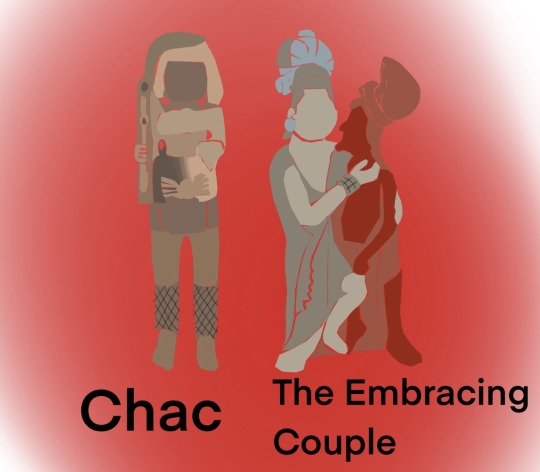
The Maya as well as many other Meso-American civilisations engaged in artistry and sculpting. Similar to the Olmecs, the Maya were skilled in the art of stone working and created small figurines as well as large monuments out of stone, clay and other materials. These stone monuments while differing in size served a variety of purposes, ranging from ceremonial processes, adornments to homes or temples, and worship of gods, ancestors and those who have passed on. In this entry, the nature and relevance of two specific statues will be discussed, the first one being a depiction of the divine figure known as Chac.
Chac was an incredibly important deity for the Mayan people living in the north of the Yucatan peninsula, as he embodied the weather and water, as well as the four directions, a function that other mythological figures also embody in other indigenous societies on Turtle Island. This function as the embodiment of the four directions is referenced in similar ways by the attire Chac is depicted in, often featuring design elements focussed on the number four. These range from the four distinct holes in the statue, the four-part knot necklace Chac is wearing, as well the four ropes his belt features. Furthermore, the obsidian blade that once was lodged in the hilt of the statues stone axe was likely imported from further inland, as this Chac statue is from the dry and arid Yucatan peninsula, where obsidian is hard to find.
As for the other statue, aptly named the ‘Embracing Couple’, the scale is the complete opposite. Being much smaller than the 7 foot stone statue of Chac, this visual art piece is merely 10 inches tall. While the purpose of both statues is still ultimately unknown, the embracing couple seems to have a more personal meaning than the Chac statue. As the Couple was found at a burial site of wealthy and influential people off the coast of the mainland, it is possible that the statuette not only depicts individuals who have passed on and are being remembered by someone who made or commissioned this art piece, but also that this art piece is what high quality Mayan artwork can look like, for the right price.
Visually speaking, the two art pieces look quite different from one another, despite being made by the same group of people. They both share an attention to detail on the face and head region of the human body, and have accurate and logical human proportions, while the Embracing Couple seems to feature more details. This is likely due to the scale of the two.
In terms of bias, there isn’t a lot, as no ethnographic gap is present. The only dividing factor would be the differing amounts of precision invested in the construction of the two, as the smaller Couple was likely more expensive to produce. In terms of how the statues relate to global history, they represent how Mayan visual culture was adapted and integrated into other Meso-American societies after their subjugation by the Toltecs, which spread their ideas and art style further beyond their cultural borders.
0 notes
Photo

Xipe Totec
Xipe Totec (pron. Xi-pe To-tec) or 'Flayed One' in Nahuatl, was a major god in ancient Mesoamerican culture and particularly important for the Toltecs and Aztecs. He was considered the god of spring, the patron god of seeds and planting and the patron of metal workers (especially goldsmiths) and gemstone workers. He is equivalent to the Red Tezcatlipoca, patron of Cuauhtli (eagle), the unfavourable 15th Aztec day-name and he was represented by the date 1 Océlotl.
Early Origins
Xipe Totec perhaps originated with the Olmec culture and developed from their ancient God VI. Another possible origin is from the Yope civilization in the southern highlands of Guerrero. The first representations of the god in art, however, date to the Post-classical period (9th to 12th century CE) in the Mazapan culture at Texcoco. The god was a major Aztec deity and was also worshipped by the Tlaxcaltecans, Zapotecs, Mixtecs, Tarascan and Huastecs. The late Post-classical Maya also adopted Xipe Totec and representations of the god survive at Oxkintok, Chichen Itza and Mayapan.
In Mesoamerican mythology Xipe Totec was the son of the primordial androgynous god Ometeotl and, specifically in Aztec mythology, he was the brother of those other three major gods Tezcatlipoca, Huizilopochtli and Quetzalcoatl. Sometimes credited with being a creator god along with his brothers, Xipe Totec was also closely associated with death, which resulted in him being considered the source of diseases amongst mankind. However, the god also received many offerings from worshippers calling for him to cure illnesses, especially eye ailments.
Continue reading...
78 notes
·
View notes
Link
0 notes
Text
Another tag that has vanished as it was so long ago:
13 shows to get to know me
Thanks again @mathgirl24 for the original tag 😁
1. Strictly Come Dancing
I love dancing and have done dance classes of various sorts my entire life, so I love this show. Totally would go on this if I were ever famous 😂
2. Doctor Who
I was born shortly before an ep aired and swear I heard that music drift down the corridor and into my soul 😁 started actually watching when I was 4 and I've never really stopped loving the show.
3. Dark
A recent addition to shows I love and adore. Watched this earlier this year and totally fell in love with it and its complex time-travel plot ❤️
4. Timeless
Another time-travel show, lots of history and amazing costumes, an awesome ship I love so much and one of the best characters ever, Garcia Flynn 🥰
5. Battlestar Galactica (2004)
Watched the original as a child in the 80s and enjoyed that, but the remake is on another level. Hands down one of the best shows ever made 🤩
6. Community
Comedy, geekiest and neurodiversity all mixed up into a wonderful package. I only wish Greendale were real so I could study there! 😂
7. Farscape
Totally bonkers sci-fi and another of the best ships on TV. Utterly wonderful 😍
8. Knightmare
Geeky CGI adventures with bits of dnd, mediaeval lore and myth and legend mixed in. I only wish I and a team of my friends had got to be on this!
9. Ulysses 31
A wonderful French/Japanese animated sci-fi show which is probably the main reason for my love of Greek mythology 😁
10. Mysterious Cities of Gold
Another French/Japanese animation from the 80s but set in 16th century South America (with frequent sci-fi twists). Definitely responsible for my interest in Inca/Aztec/Maya/Olmec history.
11. Prisoner: Cell Block H / Wentworth
I love a drama set in a women's prison, so the original and remake Australian shows are both fab in different ways.
12. The Haunting of Hill House
I don't scare easily, so always appreciate a film or show that can achieve that. This show was utterly terrifying! It also managed to be heart-wrenchingly sad and beautiful at the same time ❤️
13. The Last Kingdom / Vikings
This may be cheating, as they are not the same show, production company or remakes/sequels, but they are both same era and have a similar feel. Another vote for historical dramas from me, plus swords and paganism and attractive Danes - can't go wrong 😁
Tagging everyone to do the same and tell us about 13 shows to get to know you 🥰
1 note
·
View note
Text
Introduction: The Origins of Chocolate
Hello. This blog will focus on the history of chocolate.
The history of chocolate is a bit like Willy Wonka and the Chocolate Factory: charming and colorful on the surface but dark and unsettling once you peel back the layers. Most people don’t want to think about colonialism, genocide, slavery, exploitation, pollution, or corporate greed when they break off a piece of that Kit-Kat bar, but Western society’s chocolate habit has always been at the expense of poorer nations.
We must begin by discussing where chocolate came from: Mesoamerica. Below is a Maya chocolate pot, found in a king's tomb in Guatemala.
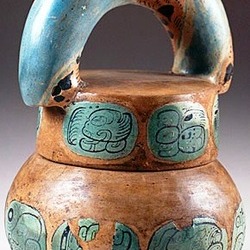
All alone I sing
to him who is my god.
In the place of light and heat,
in the place of the world,
the cacao has flowered, is frothing,
and the drink, that inebriates with flowers.
I breathe it in,
my heart savors it,
my heart is inebriated,
in truth my heart knows it:
Hail redness of rubber collar!
fresh and fiery,
you light your garland of flowers,
O mother!
Sweet, delicious mother,
precious flower of roast corn,
you only offer yourself,
you shall be abandoned,
you shall have to depart,
you shall remain unfleshed.
Here you have come,
before the princes,
you, marvelous creation,
inviting to pleasure.
On the mat of blue and yellow feathers
here you are set up.
Precious flower of roast corn,
you only offer yourself
you shall be abandoned,
you shall have to depart,
you shall remain unfleshed.
[...] The cacao in flower
is already frothing,
the flower of tobacco is shared out.
My heart if it wished
would be inebriated...
“All Alone, I Sing” Tlaltecatzin of Cuauhchinanco.
Translated by Timothy Ades
Let this poem set the tone.
Chocolate began in ancient Mesoamerica. It was discovered by the Olmecs, refined by the Maya who first called it Cacao, and then given to the Mexica (or Aztecs) who gave it the name "chocolate". Ancient Maya, Aztec and Olmecs created chocolate plantations and were the first to ferment, roast and grind the beans into a powder or paste. And while we associate chocolate with desserts, the Mesomarericans used it as a spice and a drink. The Aztecs named the drink Xocatl, which is where we get the word "chocolate" from.
As a drink, cacao was enjoyed by the upper classes of their society, a symbol of wealth and power linking them to the Gods. It was an important part of culture in Mesoamerican society, with the plant playing a significant role in mythology, religion, culture and commerce. They considered it the “tree of life”, and the cacao beverage to be the “food of the Gods”--something sacred to be protected, not a cheap mass-produced snack product the way we view it today. Cacao beans were used as currency and as a tax paid to the government–a 1545 document written in the Nahutl language of the in the Aztec empire shows that the daily wage of an Aztec porter was 100 cacao seeds, a turkey was worth 200 seeds, and a tamale from a street vendor was worth one seed. They were often given as gifts to celebrate births, marriages and initiations into society. Thanks to a funerary bowl discovered in southern Belize, we know that cacao beans were sometimes even buried with dead bodies to guarantee safe passage into the afterlife, much like how ancient Greeks would bury their dead with coins to give to Charon.
Rather than a commodity to be bought and sold, the Mesoamericans viewed chocolate as something more than that. It was food, it was currency, and it was sacred, representing power, wealth, and their Gods. This would change once the Spanish Empire made contact with the Mexica, and discovered the mysterious brown bean that would eventually change the world forever…
0 notes